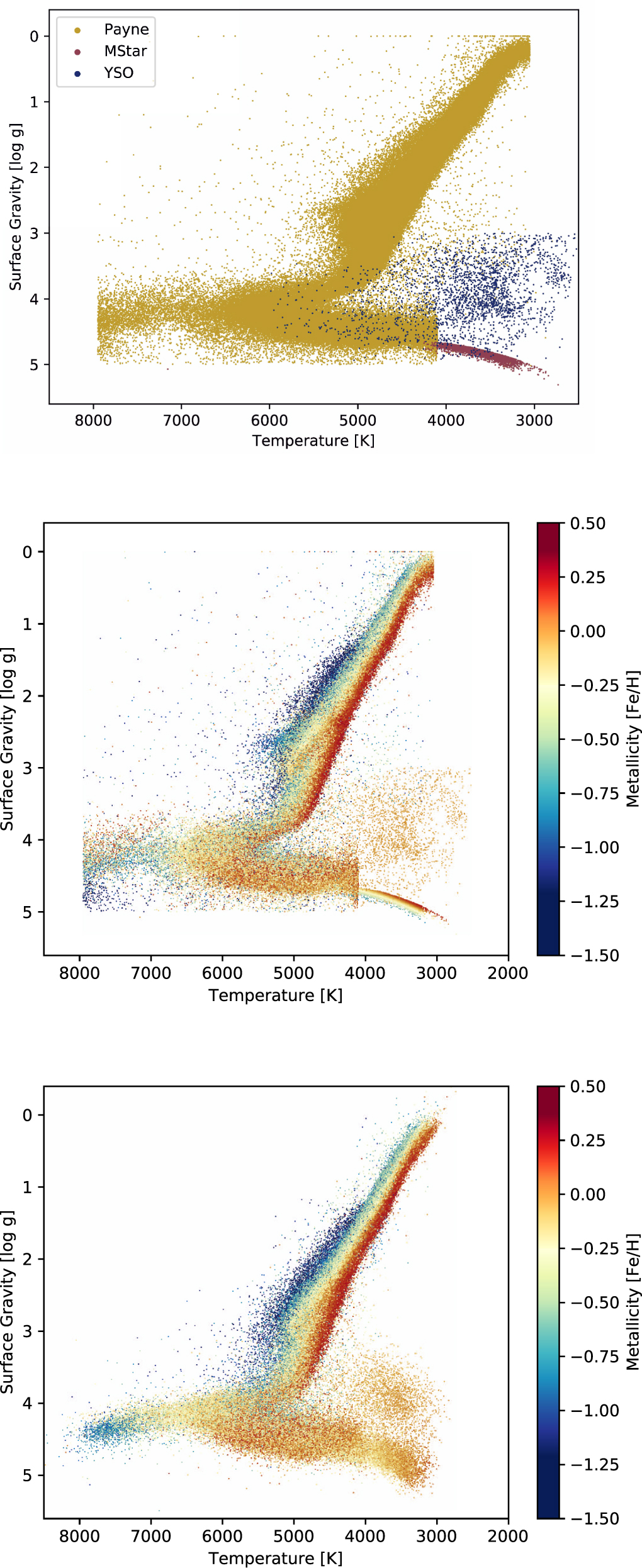Machine learning has shown promise in predicting stellar properties (temperature, composition, surface gravity, etc) given an input spectra. In previous attempts, the performance has been underwhelming for low mass and young stars. We aimed to correct that with a new machine learning algorithm that was properly trained in these domains, and had some success.
Abstract: Machine learning allows efficient extraction of physical properties from stellar spectra that have been obtained by large surveys. The viability of ML approaches has been demonstrated for spectra covering a variety of wavelengths and spectral resolutions, but most often for main sequence or evolved stars, where reliable synthetic spectra provide labels and data for training. Spectral models of young stellar objects (YSOs) and low mass main sequence (MS) stars are less well-matched to their empirical counterparts, however, posing barriers to previous approaches to classify spectra of such stars. In this work we generate labels for YSOs and low mass MS stars through their photometry. We then use these labels to train a deep convolutional neural network to predict log g, Tef f and Fe/H for stars with APOGEE spectra in the DR14 dataset. This “APOGEE Net” has produced reliable predictions of log g for YSOs, with uncertainties of within 0.1 dex and a good agreement with the structure indicated by pre-main sequence evolutionary tracks, and correlate well with independently derived stellar radii. These values will be useful for studying pre-main sequence stellar populations to accurately diagnose membership and ages.
